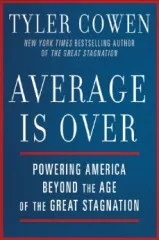- | Financial Markets Financial Markets
- | Expert Commentary Expert Commentary
- |
Problems Are in Sectors, Not the System
We should always be willing to learn from the past, and I do count Marx, for all his flaws, among the great economists. But we should not forget that he was in fact wrong about most things, not just about the totally impractical nature of his communist alternative.
The New York Times Room for Debate posted this question:
While Marx’s prediction of our political future was finally discredited with the fall of communism, is his view of our economic future being validated?
Tyler Cowen provided the following response:
Marx was a very perceptive thinker and he had a good understanding of the volatile — and productive — tendencies in the capitalism in his time. He also hadsome foresight about the problems of our contemporary world, but he got a lot wrong too.
There is in fact a problem with stagnant wages in today’s developed economies. But in the United States for instance much of the problem lies in our low productivity health and education sectors, which raise the cost of living for everybody, plus the high cost of renting or buying in desirable urban areas and in good school districts.
Better and cheaper services are equivalent to a boost in real wages and income, so solving these problems would go a long way toward improving living standards. It also would make income inequality less objectionable, because the real issue should be low living standards at the bottom of the scale, not the gains at the top.
The problems are very often rooted in our imperfect institutions, such as lack of accountability in our schools, and a health care system which combines the worst properties of public and private sector incentives, leading to more expensive service and lower quality and access. Less zoning and more high-density construction would ease the housing budgets of many lower-income Americans.
Does Marx provide a very good guide to understanding all of those problems? Mostly not. Neoclassical microeconomics explains why some of our services are low quality and high cost, namely too much third party payment through insurance companies, too much regulation of the wrong kinds, and the difficulties consumers face in judging quality. “Public choice” analysis, which analyzes how special interests turn government away from pursuing the general welfare, was quite familiar to Marx and that is to his credit. Yet many of today’s economic problems stem from vested interests in the education sector, or from homeowners who do not want to allow more building in their neighborhoods, rather than from rapacious capitalists.
How much in fact can we blame the special interest group of “capitalists” as a class? To cite one example, companies which make and sell medical devices and equipment really have been a force behind excess subsidy and thus the inflation of health care costs. Still, this kind of insight was familiar to Adam Smith and the classical economists and Marx’s often simplistic class analysis is not always illuminating.
Marx pointed out, again perceptively, that capitalism might be subject to a declining rate of profit, and indeed the rate of productivity growth generally has been lower since the 1970s. But why? I would cite energy price shocks, greater investments in environmental goods (which may well be optimal), political dysfunction, the difficulty of topping the amazing achievements of the early 20thcentury, a bit of cultural complacency, and a generally greater aversion to risk, failure and also the new NIMBY “not in my backward” mentality. Most of Marx’s analytical constructs are convoluted, replete with contradictions, and in any case not ideally suited toward analyzing those problems.
We should always be willing to learn from the past, and I do count Marx, for all his flaws, among the great economists. But we should not forget that he was in fact wrong about most things, not just about the totally impractical nature of his communist alternative.

